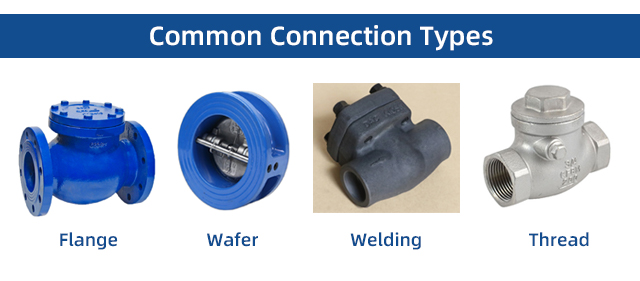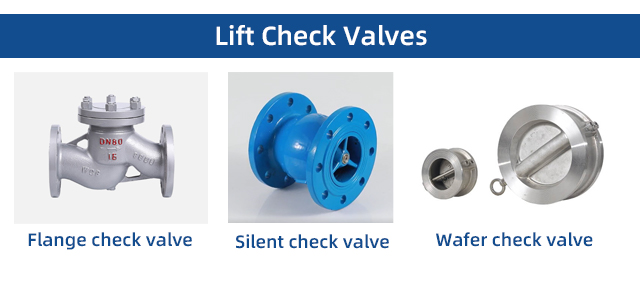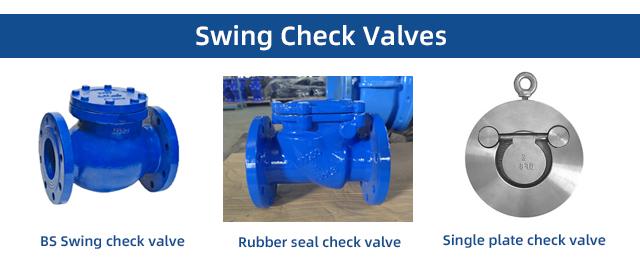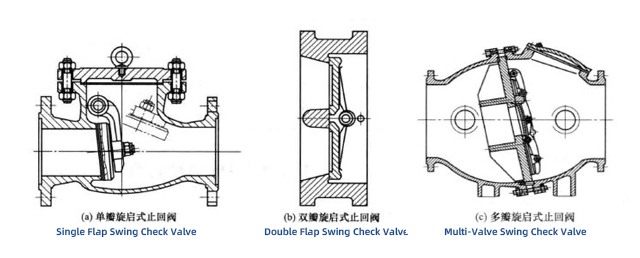- Gate valve
-
- DN1000 Extension stem double flange soft seal gate valveDIN F4 resilient seated gate valveDN450-1200 Resilient Seated Gate ValveDIN F5 resilient seated gate valveSocket connection soft seal gate valveUnderground cap soft seal gate valveBS5163 rising stem soft seal gate valveHard seal gate valveAPI slab Gate ValveStainless steel flange gate valveWafer knife gate valvePneumatic gate valveSoft seal gate valveExtension stem gate valveUL/FM fire protection groove ends gate valveRising stem forged steel gate valvecarbon steel gate valveStainless steel threaded gate valveDIN soft seal gate valveANSI soft sealing gate valve 200PSICast iron gate valveBS resilient seated gate valve
- Butterfly valve
-
- DN900 pneumatic triple eccentric hard seal butterfly valveD643H Triple Eccentric Butterfly ValveD343H Hard seal butterfly valveMulti standard EPDM seated butterfly valveSingle flange butterfly valveDN2000 Double eccentric butterfly valveFlange butterfly valveLug butterfly valveWafer butterfly valve with handleWorm gear operated butterfly valveWafer lined fluorine butterfly valveStainless steel wafer butterfly valveStainless steel flanged butterfly valveThree eccentric flange butterfly valvePneumatic flanged butterfly valvePneumatic wafer butterfly valveTriple eccentric butterfly valve wafer typeWafer butterfly valve ULC approvedInflatable seat butterfly valveHigh performance butterfly valveGrooved end butterfly valveElectric soft seal butterfly valveFlange fluorine lined butterfly valveHandle aluminum butterfly valveWorm Gear Aluminum Butterfly ValveFull PTFE lined butterfly valve wafer typeOne stem no-pin wafer butterfly valveMulti standard aluminum stem butterfly valveStainless Steel wafer Butterfly ValveAluminium handle operated lug butterfly valveLever Operated Flange Butterfly ValveButterfly valve stemButterfly valve discButterfly valve seat
- Ball valve
-
- DN1400 top-mounted eccentric semi-ball valveFlanged three-way ball valveFully welded ball valveNatural gas ball valveHigh platform flange ball valve1 PC ball valveFixed ball valvePTFE seat flanged ball valveMetal seat ball valveAPI 6D ball valve3 Piece ball valveFull Bore 3 way ball valve L-Port3 Way T-Port ball valve2PC Ball valve female thread stainless steel
- Globe Valve
-
- API Carbon Steel Globe ValveBellows Globe ValveStainless steel flange globe valveStainless steel thread S type globe valveStainless steel thread B type globe valveCast Steel Globe ValvePiston Globe ValveWCB Carbon Steel Globe Check Valveelectric motorized control stainless steel SS316 globe valveBrass Globe ValveCryogenic Globe valveHT200 Globe ValveThreaded Stainless Steel Globe ValveGG25 Globe ValveANSI API Cast Steel And Stainless Steel Globe valve
- Check valve
-
- Rubber seal check valveDN800 Slow closing check valveDN800 Rubber Disc Check ValveButterfly Buffering Check Valvecheck valve with counter weightSilent Check ValveWCB Swing check valveSwing Check ValveSingle Chip Check Valve H74WStainless Steel Wafer Check ValveSwing Start Check ValveFoot check valveAPI Swing Check ValveDIN Flange check valveSingle plate check valveLifting Check ValveBottom ValveHammer Diminish Noises Check ValveWafer Check ValveWafer dual plate check valve
- Control valve
-
- Static Balancing ValveCage Guided Sleeve Globe Control ValveDN1000 Piston Flow Regulating ValveDN1600 Electric Actuator Flow Regulating ValvePneumatic Flanged Butterfly ValvePneumatic Wafer Butterfly ValveAngle Seat ValvePneumatic gate valveElectric three-way control valveElectric sleeve control valve
- Water Meter
-
- Vertical Type Water MetersStainless steel threaded water meterPiston water meterPlastic water meterMore flow rotor dry water meterspiral vane flange water meterCI wotlman water meter with pulse outputLXCLG(R) Vertical removable element woltman cold (hot) water meterSingle flow rotor dry water meterPrepaid Token Water MeterElectromagnetic flowmeterRotary Piston Liquid Sealed Water MeterRotary Piston Liquid Sealed Water Meter
- Air valve
-
- Double ball exhaust valveDoubleair Air Valve SaudiDoubleair Air Valve Southeast AsiaDoubleair Air Valve South AmericaDouble Air ValveThreaded Air ValveSingle Air ValveTriple Functions Air ValveAutomatic Air Release ValveAutomatic release valveAutomatic exhaust valveComposite Exhaust Air ValveBrass exhaust valveDouble Ball Air Valve
- Pipe Repair & Coupling
-
- Flexible Multi-Function Pipe Coupling ZFJ-SSS Semi-Circle Pipe Repair Clamp SJW-HDuctile Iron Band Repair ClampStainless Steel Band Repair ClampDouble-Section Pipe Repair CouplingFolding Type Pipe RepairSingle-Section Multi-Function Pipe Coupling MF-SGear-Ring Type Multi-Function Pipe Coupling GR-SZBW Damping Corrugated Hose
- Dismantling Joint
-
- VSSJAFC(CC2F) Detachable Flange Transmission JointVSSJA-2(B2F) Double Flange Limited Expansion JointVSSJA-1(BF) Single Flange Limited Expansion JointVSSJA(AF) Flange Loose Expansion JointJGD-B Threaded Rubber JointZBW Damping Corrugated HoseKXT-S Flexible Dual-Spherical Rubber JointKXT Rubber Soft JointFlange Adaptor
What is a check valve?
Check valve refers to the opening and closing parts for the round valve and relies on their own weight and media pressure to produce action to block the medium backflow of a valve. Is an automatic valve, also known as a check valve, check valve, back valve, or isolation valve.
Principle of operation:
The opening and closing parts rely on the flow of media and the power to open or close, to prevent the backflow of the media valve called a check valve.
Check valve belongs to the automatic valve class, mainly used for the one-way flow of media on the pipeline, only allowing the media to flow in one direction to prevent accidents.
A check valve must be installed in the pump outlet, the only special is the bottom valve, pump suction port of the bottom valve also belongs to the check valve class. Bottom valve is installed on the inlet pipe of the pump, the role is to prevent the pump from stopping the work of the pump pipe in the water flow, so that the pump in the next work will not have to fill the pumping pipe again, improve the efficiency of the work.
Nominal pressure or pressure level: PN1.0-16.0MPa, ANSI CLASS 150-900, JIS10-20K
Nominal diameter or calibre: DN15~900, NPS 1/4 ~36
Applicable temperature: -196℃~540
Valve body material: ductile iron, carbon steel, 304 316, titanium alloy, chromium molybdenum steel
Medium: Selection of different materials, check valves can be applied to water, steam, oil, nitric acid, acetic acid, oxidizing media, urea, and other media.
Check valves can be divided into threaded, flanged, welded, and clamped according to the connection form.
Check valves can be divided into lift check valves, swing check valves, butterfly check valves, and others according to the structure.
1. Lift check valve is divided into vertical and horizontal two kinds.
2. Swing check valve is divided into single-valve type, double-valve type, and multi-valve type.
3. Butterfly check valve is straight-through type.
Lift check valve:
Fluid is introduced from the low end, due to the pressure difference between the valve and the fluid after the valve produced by the thrust is greater than the gravity of the valve flap and the valve flap top rise, the fluid by the valve flap and seal ring ring ring through the high end of the flow out of the valve body; but the fluid backflow occurs, the pressure at the outlet end is greater than the inlet end pressure, the valve flap in the gravity and the pressure difference between the action of the valve flap down and seated in the seal ring, to stop the reverse flow of fluids.
The swing check valve consists of a valve body, valve cover, valve flap, valve seat, and rocker.
The valve flap is shaped like a disc and rotates around the pin outside the valve seat channel.
Working Principle:
The valve flap and rocker of the swing check valve are connected and can rotate around the pin at a certain angle. When the pipeline fluid flows in the specified direction (from left to right), the valve inlet pressure is higher than the outlet pressure, the valve is pushed away from the valve seat, rotating around the pin in a certain position, and the valve is open. When the pressure difference between the two sides of the valve flap is reduced to a certain point, the valve falls back to the closed state.
The valve channel into a streamlined flow resistance is smaller than the straight-through lift check valve, suitable for large-diameter pipelines. But at low pressure, its sealing performance is not as good as the lift check valve. To improve the sealing performance can be used to assist the spring or the use of heavy hammer structure to assist the sealing.
Swing check valve.
The swing check valve consists of a valve body, valve cover, valve flap, valve seat, and rocker.
The valve flap is shaped like a disc and rotates around the pin outside the valve seat channel.
Working Principle:
The valve flap and rocker of the swing check valve are connected and can rotate around the pin at a certain angle. When the pipeline fluid flows in the specified direction (from left to right), the valve inlet pressure is higher than the outlet pressure, the valve is pushed away from the valve seat, around the pin to rotate a specific position, and the valve is open. When the pressure difference between the two sides of the valve flap is reduced to a certain point, the valve falls back to the closed state.
The valve channel into a streamlined flow resistance is smaller than the straight-through lift check valve, suitable for large diameter pipelines. But at low pressure, its sealing performance is not as good as the lift check valve. To improve the sealing performance, auxiliary springs can be used or the use of a heavy hammer structure to assist the seal.
1.Do not make the check valve in the pipeline to bear the weight, the large check valve should be independently supported so that it is not affected by the pressure generated by the pipeline system.
2.Installation, pay attention to the direction of media flow should be consistent with the direction of the arrow marked on the valve body.
3.Lifting vertical flap check valve should be installed in the vertical pipeline.
4.Lifting horizontal flap check valve should be installed in the horizontal pipeline.
5.Swing-opening check valve installation position is not restricted, usually installed in the horizontal pipeline, but can also be installed in the vertical pipeline or dumping pipeline.
6.The installation of check valves, should pay special attention to the direction of media flow, and should make the normal flow of media direction and the direction of the arrow indicated on the valve body. Otherwise, it will cut off the normal flow of media. The bottom valve should be installed at the bottom of the pump suction line.
7.Check valve closure, which will produce water hammer pressure in the pipeline, which can lead to serious damage to the valve, pipeline, or equipment, especially for large port pipelines or high-pressure pipeline
Why more and more customers are choosing wesdom valves:
1. There is a professional technical team, and quality is guaranteed
2. Independent factory, more favorable price
3. Extensively trained employees are well-versed in all aspects of flow control technology
We look forward to working with you!
To learn more about our products, please contact:
WhatsApp: +86 13849184495











